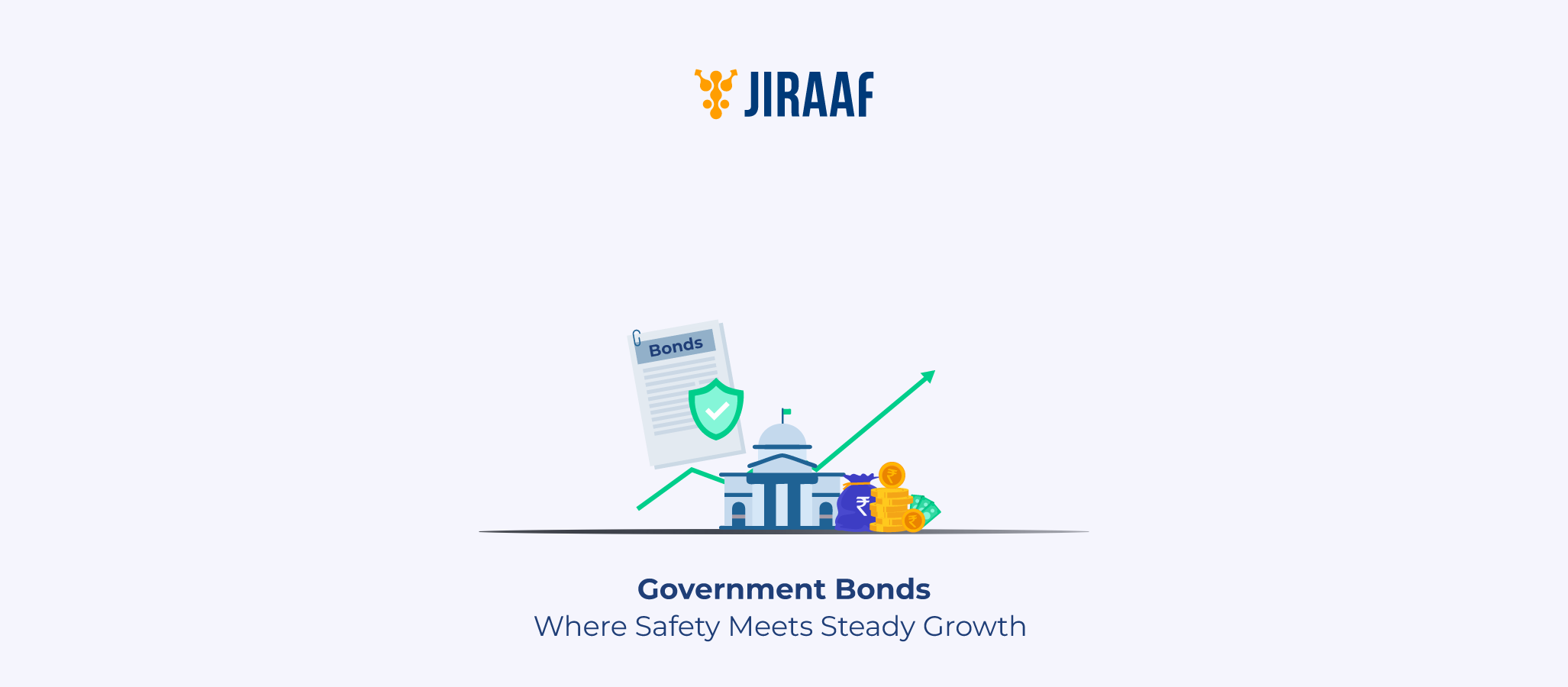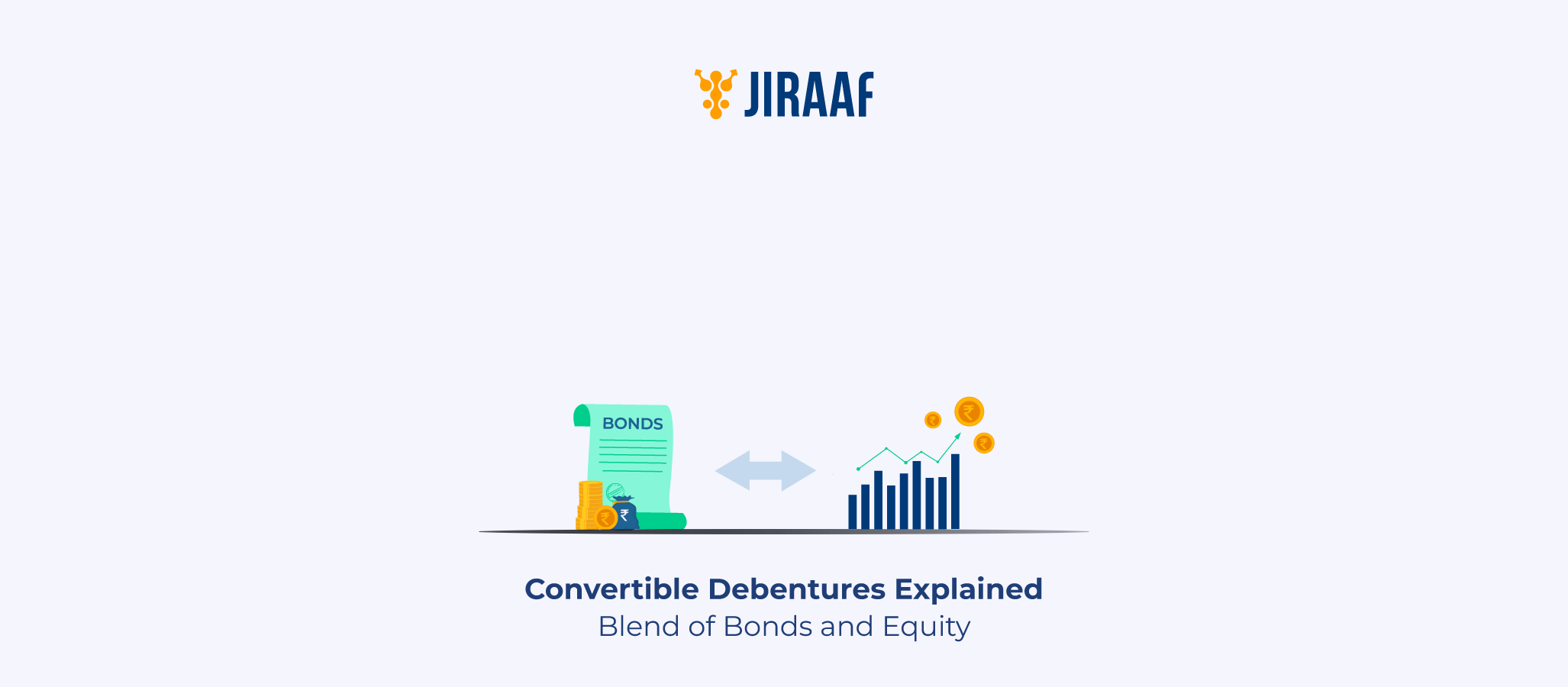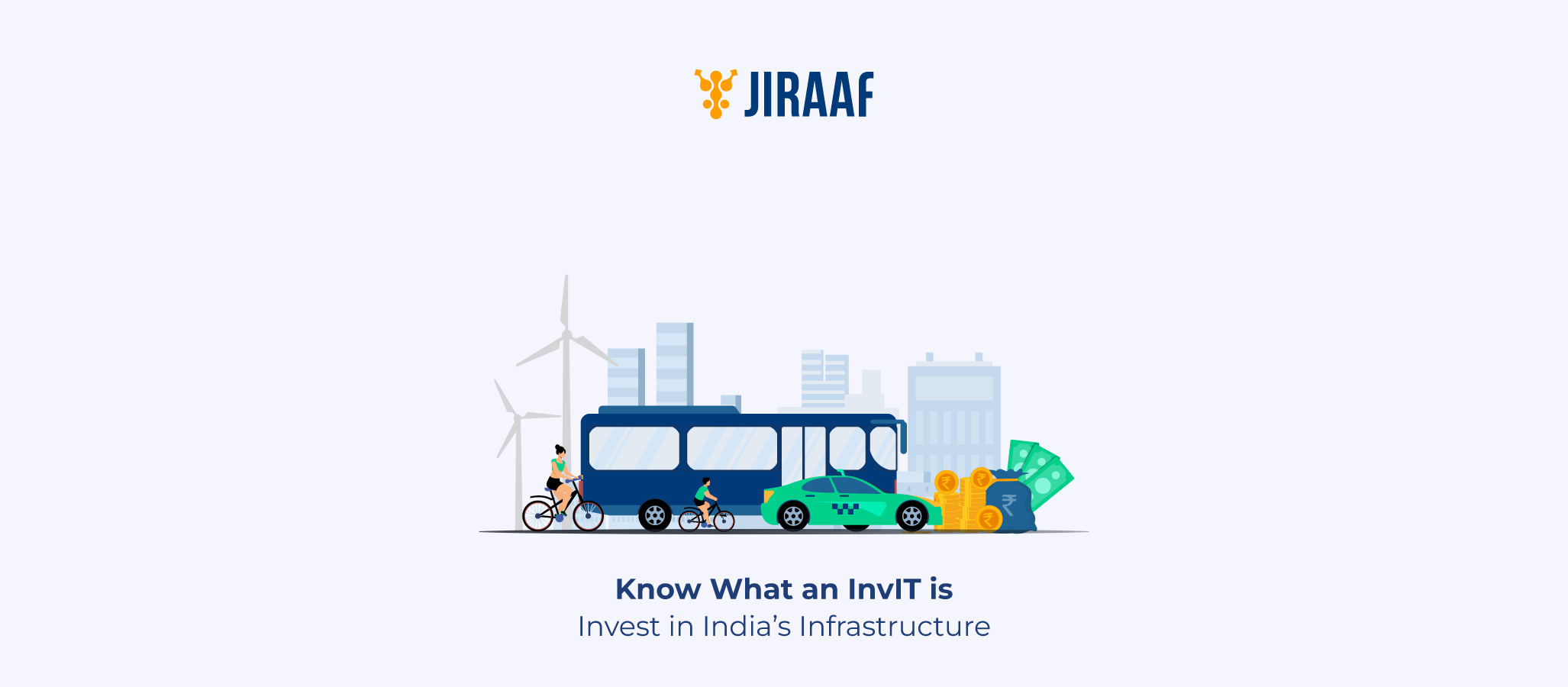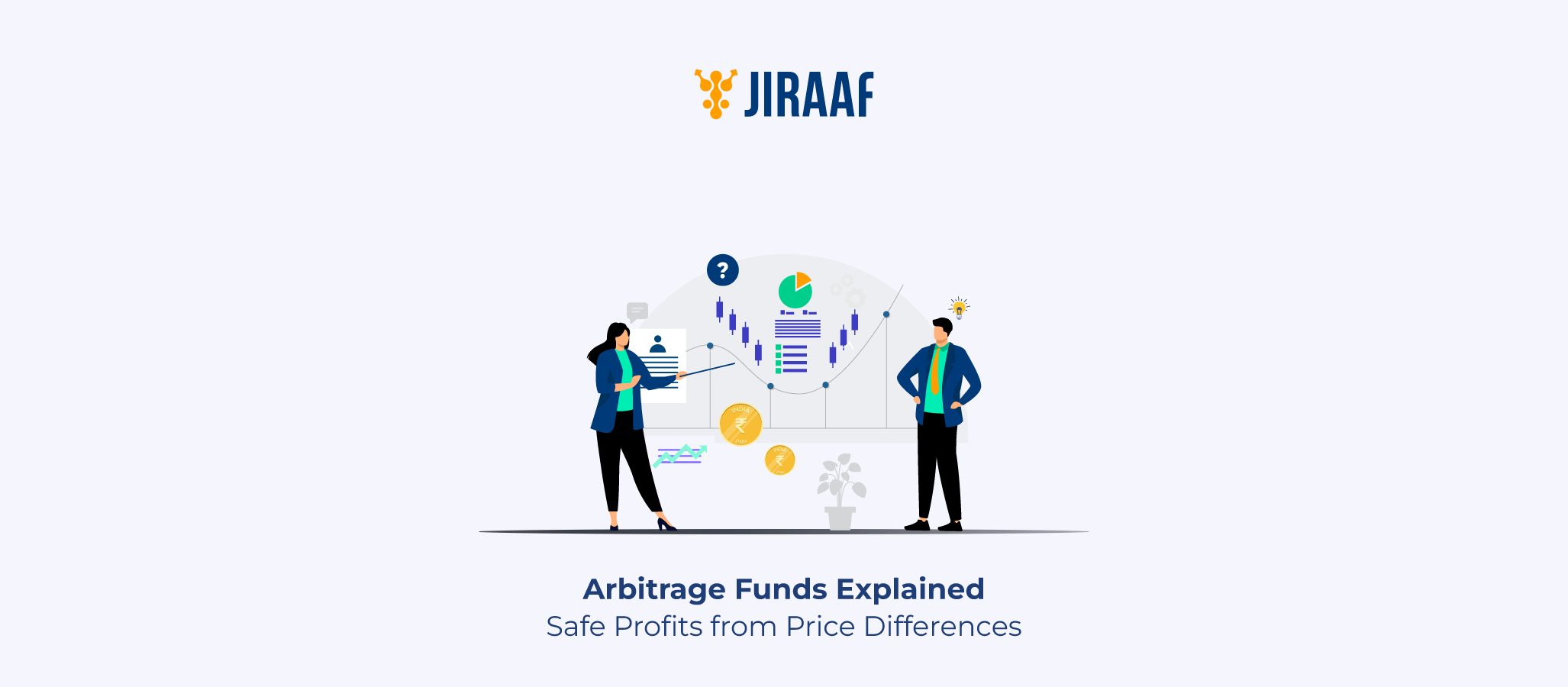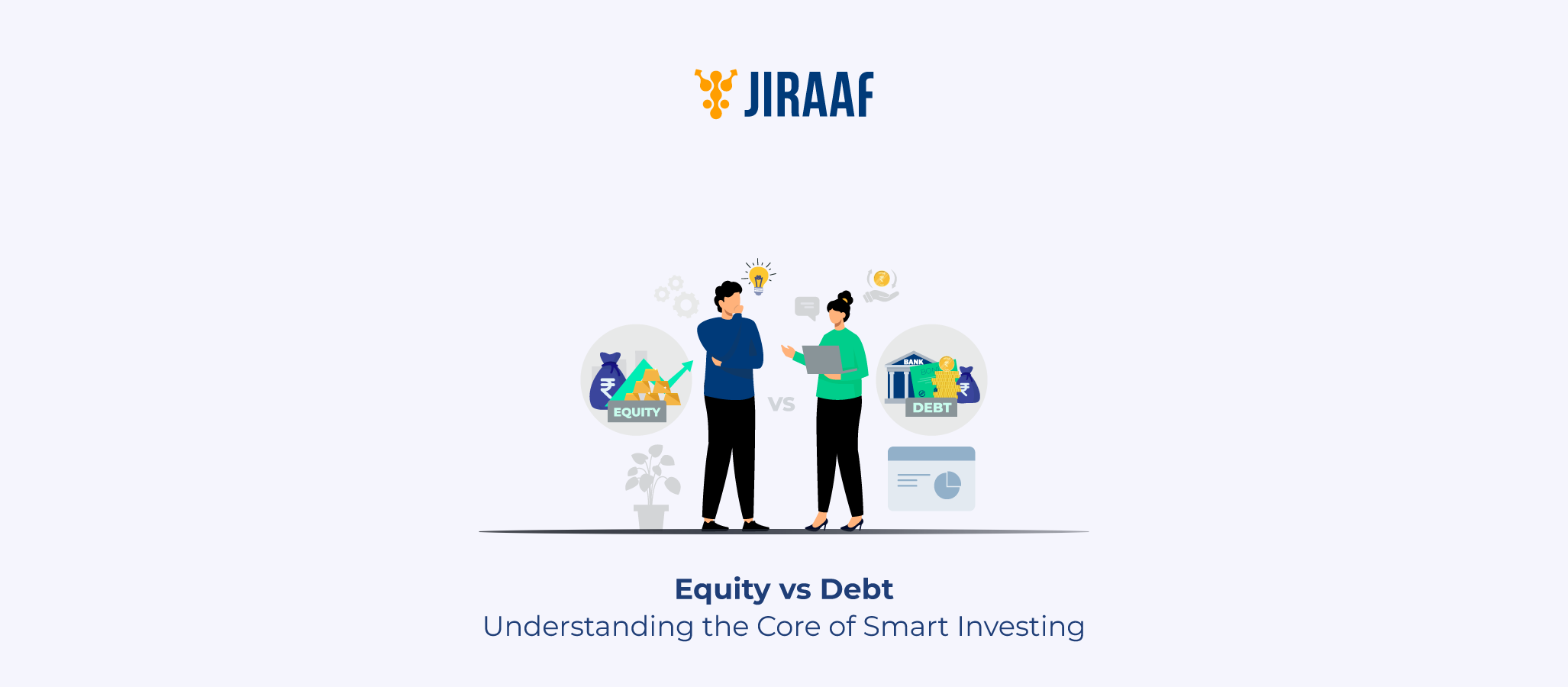Your investment portfolio is much like a ship charting its course through changing tides. To stay steady and move forward, it needs both anchors and sails. Government bonds serve as an anchor, with their sovereign guarantee protecting your capital when markets turn rough. Private bonds, on the other hand, are the sails that capture the momentum of stronger winds and drive your portfolio’s growth.
Together, they create the kind of equilibrium every portfolio needs; one steadies your wealth when markets waver, the other offers higher returns, with a pinch of risk.
In this blog, we’ll explore what the key differences are between government and private bonds, their risk–return dynamics, and more. Let’s get started.
What are Government Bonds?
Government bonds are debt securities issued by both state and central governments to manage their fiscal deficit and fund other public expenditures. These bonds are considered one of the safest investment instruments in India, as they are backed by the government’s sovereign guarantee.
Government issues both long and short-term bonds to meet its specific capital needs. Some of the common types of government bonds include:
- Treasury Bills: T-Bills are short-term debt securities that mature within one year.
- Municipal Bonds: Issued by urban local bodies or municipalities to finance public infrastructure projects like roads, water supply, and sanitation.
- State Development Loans (SDLs): They are issued by state governments to fund fiscal and developmental needs.
- Inflation-Indexed Bonds: Bonds whose principal and interest payments are linked to an inflation index, such as the Consumer Price Index (CPI), protecting investors from rising prices.
Typically, these bonds carry a CRISIL credit rating of AAA to AA-. The benchmark 10-Year government security (G-sec) currently yields around 6.5%, while other G-secs, like PSU bonds, generally offer yields ranging from 7.5% to 9%, depending on the specific PSU, maturity, and rating.
While government bonds anchor your portfolio with safety and stability, not every investor stops there. Some seek higher returns, even if it means taking on a bit more risk. That’s where private (corporate) bonds come into play, offering investors like you a chance to earn more by lending to businesses rather than the government.
What are Private (Corporate) Bonds?
Private bonds are issued by entities such as NBFCs, banks, and private corporations (including PSUs) to raise capital for business expansion or operational needs. These bonds typically offer higher yields than government bonds, compensating you for the additional risk they carry.
Private bonds are assigned credit ratings ranging from ‘AAA’ to ‘D’, depending on the issuer’s financial health and repayment capacity. If you are seeking a balance between safety and returns, then focus on investment-grade bonds rated AA to BBB-, which offer relatively higher yields while keeping default risk in check. The ones rated below BB+ fall into the junk bonds category, where default risks rise sharply.
In terms of maturity, private bonds usually fall into two broad categories: short-term bonds that mature within five years, and long-term bonds with maturities extending beyond ten years.
Both government and private bonds may serve different objectives for investors, but together they shape the backbone of India’s debt market. Understanding how they diverge in structure, risk, and returns can help you see which one aligns better with your investment goals.
Key Differences Between Private and Government Bonds
| Sr. No. | Aspect | Private Bonds | Government Bonds |
| 1 | Issuer | Private sector entities including corporations, financial institutions, and infrastructure companies | Central or state governments and government-backed agencies |
| 2 | Credit Risk | Higher credit risk depending on the issuing entity’s financial position and creditworthiness rating | Minimal credit risk due to sovereign backing and government guarantees |
| 3 | Yield | Generally offer higher yields as compensation for elevated credit risk exposure | Typically offer lower yields reflecting their lower-risk profile |
| 4 | Benchmark Status | Valued relative to government bond yield benchmarks and market standards | Function as the primary yield benchmarks for the entire debt market |
| 5 | Market Sensitivity | Demonstrate greater sensitivity to business cycles and issuer-specific developments | Exhibit lower sensitivity to market volatility, providing portfolio stability |
| 6 | Regulatory Treatment | Given less priority in regulatory capital requirements and reserve calculations | Receive preferential treatment in regulatory frameworks and financial regulations |
| 7 | Credit Analysis | Assessment focuses on the issuer’s financial statements, industry dynamics, and business outlook | Evaluation based on sovereign creditworthiness, fiscal discipline, and macroeconomic fundamentals |
Risk and Return Comparison Between Private and Government Bonds
Both government and private bonds come with their own sets of risks and return dynamics.
Government bonds are often seen as the safest investment option, but they’re not entirely risk-free. They can face liquidity risk if there aren’t enough buyers in the secondary market and inflation risk when fixed returns fail to keep up with rising costs.
Private bonds, meanwhile, offer higher yields but carry default risk. To manage this, it’s best to stick with investment-grade bonds rated AA to BBB-, where the risk-reward balance stays healthy.
Understanding these nuances is only an initial step, the real value lies in seeing how they play out for specific bonds. That’s where Jiraaf’s Bond Analyzer Tool comes in, helping you compare potential bond yields side by side with just a click.
It lets you explore a range of issuers, from AAA to BBB-, and instantly compare their yields against benchmark G-secs, helping you see where the real opportunities lie.

The above image shows the yield comparison between two A+ rated issuers and G-sec from Sep 2024 to July 2025.
With Jiraaf’s Bond Analyzer Tool, this is how simple it is to instantly perform similar comparisons across issuers rated AAA to BBB-, gaining a clear, data-driven view of how different bonds stack up, and confidently assess the right balance between risk and return with just a click.
Final Thoughts: Which Bonds Should You Invest In?
Choosing between private and government bonds depends on your financial goals, risk appetite and overall market conditions.
If you prefer safety and capital protection, government bonds may be a good fit, offering stability and predictable returns. On the other hand, if you’re aiming for higher yields and are comfortable taking on a bit more risk, private bonds would work well for you.
However, the smartest choice is to blend both in your portfolio. Holding a mix of both private and government bonds helps create a balanced portfolio; one that stays steady during market volatility and grows when conditions improve.



